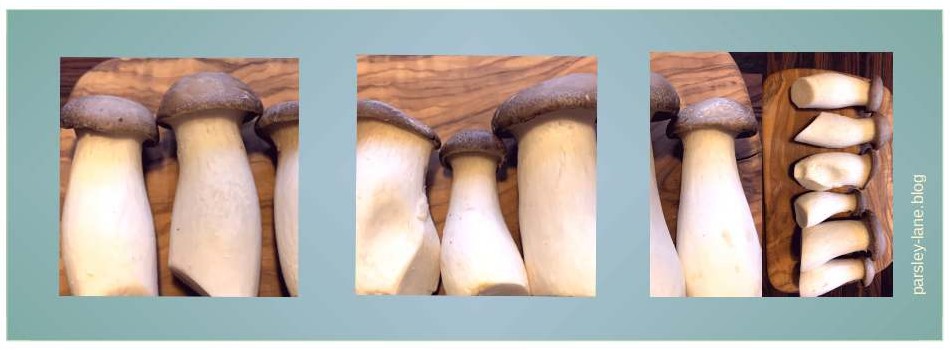Oyster with Plenty Pearls
You think that by using Cremini you can basically button it up with mushrooms? Wrong you are (Ingredient Special on King Oyster Mushrooms).
If you ever thought mushrooms were boring, well, you’re clearly mistaken. Mushrooms have literally colonized this planet for millennia, and there are thousands of varieties. Most of them are not edible, of course. But those that are edible are definitely a divine kind of food. Perhaps this is one of the reasons why they were declared a royal food in ancient Egypt.
My favorite mushroom, the king oyster mushroom, still grows in this high tradition. Not only is it a very handsome edible mushroom, but it is also quite versatile and, thanks to excellent mushroom cultivation, is basically available year-round (in several countries already).
Its versatility includes the fact that it holds its shape well when cooked and fried, on the grill or even in the oven. It can also be used to replace porcini mushrooms (Boletus edulis) in traditional recipes, especially the heads. Both the heads and the stalks must be heated well to obtain their full flavor. They can also be frozen. In this case, the mushrooms must be sliced beforehand and used directly in cooking after removal from the freezer (do not thaw beforehand!). I owe this latest wisdom to ‘a little help from my friends’ at Pilzgarten (see Side Notes below). The same goes for the information that the king oyster mushroom is not only a source of protein, but also of iron. This makes it even more of a sustainable food option because it is also easy and environmentally friendly to grow.
Speaking of the environment: The Pleurotus eryngii, if we want to use the fancy botanical term here, is a member of the Pleurotus family. This is a fascinating group of fungi that includes members which are not only used for food, but also for various medicinal purposes. And have been for quite some time, with even more promising possibilities under current research by scientists. Mushrooms in this same family can live on old and rotting wood, grow as parasites on the roots of other plants, or even get a little carnivorous now and then. But don’t worry, they only eat microscopic worms, like many other organisms that live on or in the soil.
So if I wanted to take my little play on words from above a bit further, I could say that this fungal king is very ‘down to earth’. Which is a good and noble quality for both fungi and other species. And yet another reason to try this wonderful mushroom for making good food. Even by a sort of royal decree.
Side Notes
- Since dealing with royalty is always a little delicate, I got some help with this ingredient special, as I mentioned above. That is, I simply asked the nice folks at the family-owned company where my favorite grocery store usually gets its king oyster mushrooms. This is the company ‘Pilzgarten’ (German for ‘mushroom garden’) in Helvesiek. And they kindly helped me. Thank you very much!!! As usual, you’ll find more about the King Oyster Mushroom – and also about ‘Pilzgarten’ – on the [InfoByteSized] page under ‘I’ as in ‘Ingredient Specials’ and ‘King Oyster Mushrooms’.
- The obligatory recipe for this Ingredient Special on King Oyster Mushrooms can be found on the next spot: [‘Mushroom in Pyjamas’]
- About Foraging for Mushrooms: Before foraging for mushrooms, make sure you know enough about edible mushrooms – and more importantly, poisonous mushrooms (learn from experts, or better yet, take an expert with you if you must forage for them yourself). Also be aware of the environmental status of the mushroom you are foraging for. In Germany, the king oyster mushroom, also known as the “Kräuterseitling”, is unfortunately on the verge of extinction.
